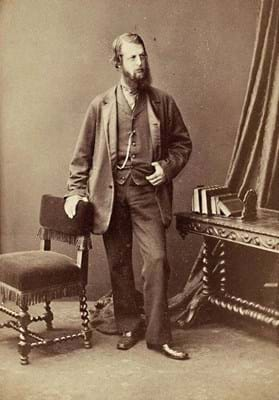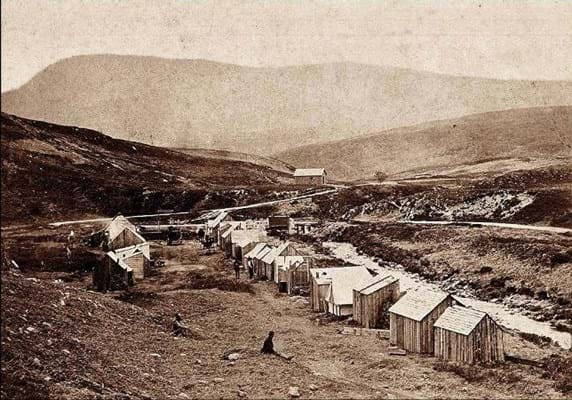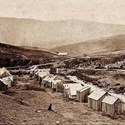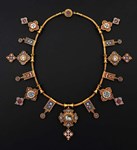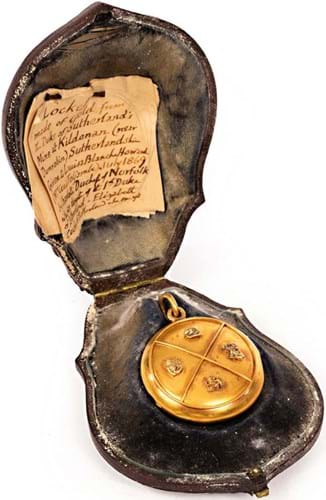
Victorian gold locket inscribed Kildonan sold for £10,000 at Chorley’s. An old handwritten note documents its provenance in the family of Louisa Blanche Howard.
The Kildonan Gold Rush was a short-lived affair.
A solitary nugget of gold weighing about 10 pennyweights was found in the River Helmsdale in 1818 and a ring made for the landowner, the 1st Duke of Sutherland (1758-1833).
However, it was the discovery of gold in the local burns half a century later by Robert Nelson Gilchrist, a native of Kildonan who had spent 17 years in the goldfields of Australia, that caused a brief explosion of interest. At a time when tales of striking it rich in California or New South Wales were strong in the memory, the possibility of panning for nuggets in the rivers of Scotland was a good news story. The Illustrated London News ran a substantial feature in May 1869.
More than 600 adventurers made their way to the Highlands in 1869, each of them paying George Sutherland-Leveson-Gower, the 3rd Duke of Sutherland, £1 a month and a cut of the profits for the permission to pan a small claim.
Some were the crofters who had been evicted from Sutherland land during the Highland Clearances and forced to eke out a living fishing for herring.
Two temporary settlements were established: a makeshift shanty town on the edge of the Kildonan Burn that went by the name Baile an Or (Town of Gold), the other the Carn na Buth (Hill of the Tents) on the edge of the Suisgill Burn.
Small pickings
In truth, alluvial deposits in Kildonan were relatively small. So too the seam of grains found in the bedrock. Before the year was out, the price of gold had fallen and the duke was receiving complaints from his tenant farmers and salmon fishermen about the local disruption.
He was also concerned that the deer-stalking season would be compromised and so refused to grant any more licences. Prospecting came to an abrupt end on December 31, 1869.
Jewellery made from Kildonan gold is rare indeed. The ring made for the Sutherlands in 1818 remains with the family, while a handful of other pieces reside in local museums.
Accordingly, there was huge interest in a Victorian gold locket fashioned with four small gold nuggets and inscribed Kildonan that came for sale at Chorley’s (27% buyer’s premium inc VAT) in Prinknash Abbey, Gloucestershire, on January 25.
A note with the lot read: Locket made of gold from the Duke of Sutherland’s Mine at Kildonan (near Dunrobin) Sutherlandshire. Given to Louisa Blanche Howard (Mrs Cecil Foljambe) July 1869 by Charlotte Duchess of Norfolk [1788-1870] who was daughter of the 1st Duke of Sutherland and Elizabeth Countess of Sutherland.
The provenance was verified by the consignor. It came for sale with an estimate of £600-800 from the family of the Earls of Liverpool and by descent from Louisa Blanche Howard (1842-71) who had married Cecil Foljambe, the 1st Earl in 1869. There was some institutional interest in this piece, but it sold to a Scottish private buyer well above hopes at £10,000.


